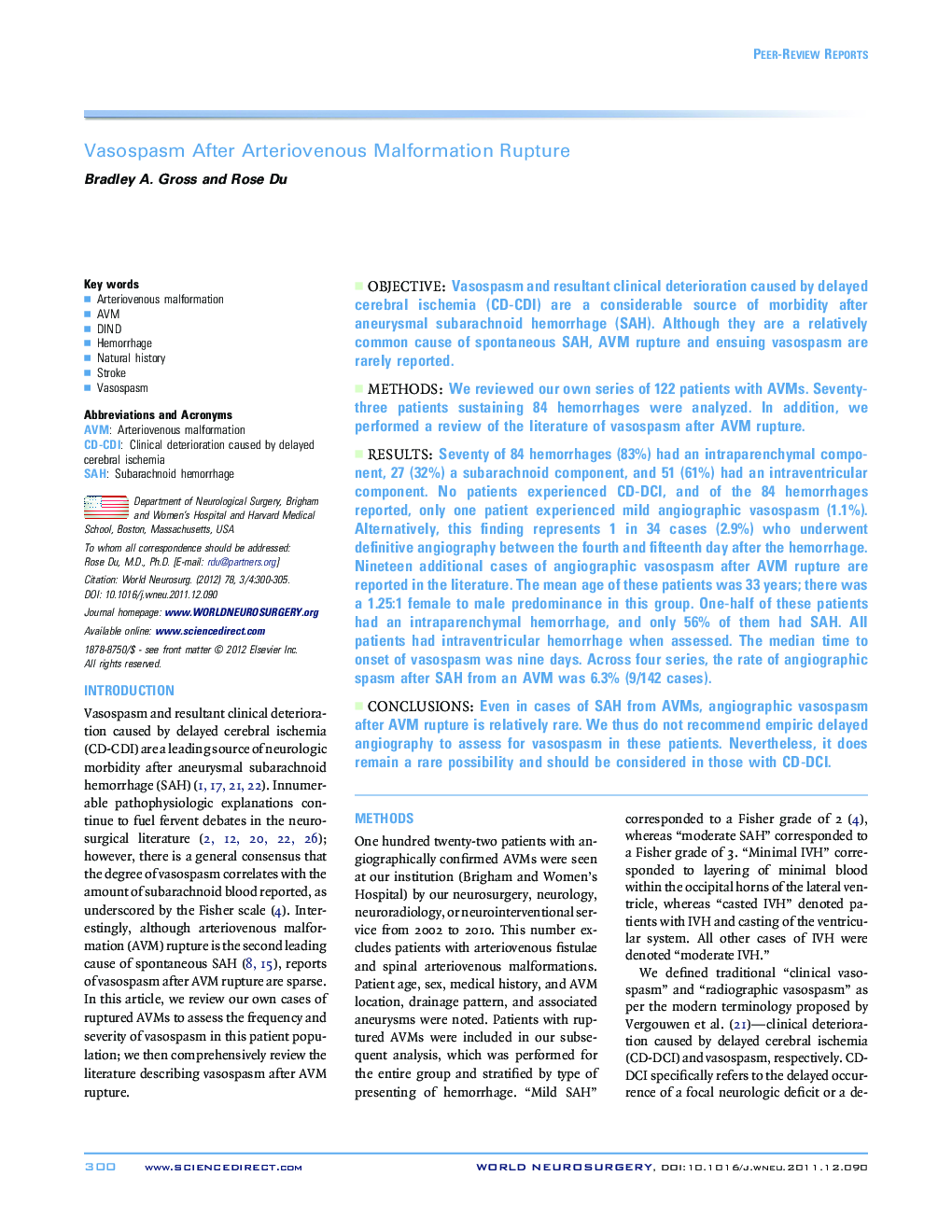| Article ID | Journal | Published Year | Pages | File Type |
|---|---|---|---|---|
| 3096334 | World Neurosurgery | 2012 | 6 Pages |
ObjectiveVasospasm and resultant clinical deterioration caused by delayed cerebral ischemia (CD-CDI) are a considerable source of morbidity after aneurysmal subarachnoid hemorrhage (SAH). Although they are a relatively common cause of spontaneous SAH, AVM rupture and ensuing vasospasm are rarely reported.MethodsWe reviewed our own series of 122 patients with AVMs. Seventy-three patients sustaining 84 hemorrhages were analyzed. In addition, we performed a review of the literature of vasospasm after AVM rupture.ResultsSeventy of 84 hemorrhages (83%) had an intraparenchymal component, 27 (32%) a subarachnoid component, and 51 (61%) had an intraventricular component. No patients experienced CD-DCI, and of the 84 hemorrhages reported, only one patient experienced mild angiographic vasospasm (1.1%). Alternatively, this finding represents 1 in 34 cases (2.9%) who underwent definitive angiography between the fourth and fifteenth day after the hemorrhage. Nineteen additional cases of angiographic vasospasm after AVM rupture are reported in the literature. The mean age of these patients was 33 years; there was a 1.25:1 female to male predominance in this group. One-half of these patients had an intraparenchymal hemorrhage, and only 56% of them had SAH. All patients had intraventricular hemorrhage when assessed. The median time to onset of vasospasm was nine days. Across four series, the rate of angiographic spasm after SAH from an AVM was 6.3% (9/142 cases).ConclusionsEven in cases of SAH from AVMs, angiographic vasospasm after AVM rupture is relatively rare. We thus do not recommend empiric delayed angiography to assess for vasospasm in these patients. Nevertheless, it does remain a rare possibility and should be considered in those with CD-DCI.
